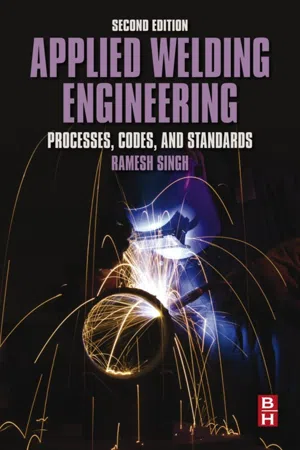When we talk of metallurgy as a science of study of metals, the first question that arises is what is a metal? Most of us can recall the introductory study of metals in basic physics in school.
Metals are best described by their properties. Metals are crystalline in the solid state. Except for mercury, metals are solid at room temperature; mercury is a metal but in liquid form at room temperature. Metals are good conductors of heat and electricity, and they usually have comparatively high density. Most metals are ductile, a property that allows them to be shaped and changed permanently without breaking by the application of relatively high forces. Metals are elements, and metals are also alloys created by humans in pursuit of specific properties. Aluminum, iron, copper, gold, and silver are examples of metals as elements. Brass, steel, and bronze are examples of alloys, the human-made metals.
Metallurgy is the science and technology of metals and alloys. The study of metallurgy can be divided into three general groups.
1. Process metallurgy is concerned with the extraction of metals from their ores and the refining of metals. A brief discussion on production of steel, castings, and aluminum is included in this section.
2. Physical metallurgy is concerned with the physical and mechanical properties of metals as affected by composition processing and environmental conditions. A number of chapters in this section specifically address this topic.
3. Mechanical metallurgy is concerned with the response of metals to applied forces. This is addressed in subsequent chapters of this section.
Pure Metals and Alloys
Pure metals are soft and weak and are used only for specialty purposes such as laboratory research work and electroplating. Foreign elements (metallic or nonmetallic) that are always present in any metal may have beneficial, detrimental, or no influence on a particular property. Whereas disadvantageous foreign elements are called impurities, advantageous foreign elements are called alloying elements. When alloying elements are deliberately added, the resulting metal is called an alloy. Alloys are grouped and identified by their primary element metal, such as aluminum alloy, iron alloy, copper alloy, nickel alloy, and so on.
Most of the metals as elements are not found in nature in their usable form. They are generally found in their various oxide forms called ores. The metals are recovered from these ores by thermal and chemical reactions. We shall briefly discuss some of these processes. The most common and most abundantly used metal iron and its recovery from nature by various means is discussed in following paragraphs.
Smelting
Smelting is an energy-intensive process used to refine an ore into usable metal. Most ore deposits contain metals in the reacted or combined form. Magnetite (Fe3O4), hematite (Fe2O3), goethite (αFeO[OH]), limonite (the generic formula for limonite is FeO[OH].nH2O), and siderite (FeCO3) are iron ores, and Cu5FeSO4 is a copper ore. The smelting process melts the ore, usually for a chemical change to separate the metal, thereby reducing or refining it. The smelting process requires lots of energy to extract the metal from the other elements.
There are other methods of extraction of pure metals from their ores. Some of these use application of heat, leaching in a strong acidic or alkaline solution, or electrolytic processes.
Iron
The modern production processes for recovery of iron from ore include blast furnaces to produce pig iron, which contains carbon, silicon, manganese, sulfur, phosphorous, and many other elements and impurities. Unlike wrought iron, pig iron is hard and brittle and cannot be hammered into a desired shape. Pig iron is the basis of majority of steel production. The majority of steel produced in the world is produced through the production of pig iron process.
Sponge Iron
Removing the oxygen from the ore by natural process produces a relatively small percentage of steels in the world. This natural process uses less energy and is a natural chemical reaction method. The process involves heating the naturally occurring iron oxide in the presence of carbon, which produces “sponge iron.” In this process, the oxygen is removed without melting the ore.
Iron oxide ores extracted from the earth are allowed to absorb carbon by a reduction process. In this natural reduction reaction, as the iron ore is heated with carbon, it results in a pop-marked surface of the iron, hence the name sponge iron. The commercial process is a solid solution reduction, also called direct-reduced iron. In this process, the iron ore lumps, pellets, or fines are heated in a furnace at 800° to 1500°C (1470° to 2730°F) in a carburizing environment. A reducing gas is produced by natural gas or coal, and a mixture of hydrogen and carbon monoxide gas provides the carburizing environment.
The resulting sponge iron is hammered into shapes to produce wrought iron. The conventional integrated steel plants of less than 1 mi...
